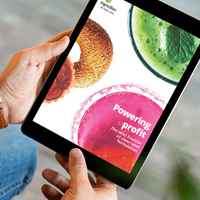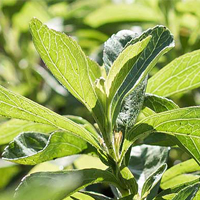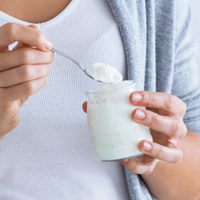
Texturiser solutions
Create sensational eating experiences
Optimise formulation and eating enjoyment with the right texturiser
Texturisers impact more than the texture of a food or beverage; they can influence consumer perception and distinguish one brand from another.
At Ingredion, we combine our 100+ years of texturiser know-how with our passion for food science and broadest portfolio of texturising solutions to help manufacturers achieve their formulation needs and make their brands stand out. Our texture and sensory experts collaborate with you to uncover solutions to your latest texture challenges and accelerate your speed to market.
We use groundbreaking research to boldly innovate sustainable ingredients and processes, and we welcome you into our global Idea Labs innovation centres to discover which of our texturiser solutions best meet the sensory and labelling needs of your applications and your consumers’ evolving preferences. Continued progress in its expansion provides manufacturers with a consistent, reliable supply with traceability and sustainable business practices that are second to none.
Look to Ingredion for the right chewy, crunchy, creamy or functional build-back texturiser solution to help achieve your business success.
Texturiser types and performance
From starches and flours to fibres and proteins, a wide range of ingredients can be used for bulking and providing different types of textures. Texturisers are available in various base materials such as tapioca, potato, rice, corn and pea to suit your label and texture needs. Cook-up, cold water swelling (CWS), and certified gluten-free options are also available. Learn more about common texturisers:
Texturiser types and performance
From starches, flours and fibres to proteins and other functional build back tools, a wide range of ingredients can be used for bulking and providing different types of textures. Whether cook-up or cold-water swelling (CWS), texturants are available in various base materials such as rice, tapioca, potato, corn and pulse to suit your label and texture needs. Certified gluten-free options are also available.

Functional native starches
Perform as well as traditional modified starches but without the E number or modified starch label. Use clean label texturants in a range of applications, including traditional and plant-based dairy and meat, ready meals, snacks and formulations requiring non-GMO, natural and/or organic labelling.

Modified starches
Deliver exceptional functionality and versatility. Choose these ingredients for: creaminess in dressings; freeze-thaw stability in ready meals; melt and stretch in processed and vegan cheese; crispy, crunchy breadings; and enhanced yield and succulence in meats.

Multi-functional clean label flours
Provide additional process tolerance, shelf-life stability and consumer-preferred labelling* versus starches. Include multi-functional flours in soups, frozen ready meal sauces and bakery fillings, and/or formulations requiring non-GMO and/or natural labelling.

Co-texturisers
Contribute additional sensory attributes such as pulpiness or perception of mouthfeel without adding bulk to the finished product. NOVATION INDULGE 3920, use alongside other texturisers in applications such as dressings, soups, bakery fillings and plant-based dairy.

Multi-benefit dietary fibres
Offer excellent water-holding capacity and retention that can act as a fat replacement and highly efficient stabiliser while adding fibre content. Formulate with fibres in beverages, cookies, muffins and cakes, dressings, sauces and meats.

Structured vegetable proteins
Provide texture, chewiness and firmness that can mimic meat. Choose these non-GMO, gluten-free ingredients in plant-based meats and as a quick-hydrating alternative to textured products containing wheat and soy.

Functional build-back sweeteners
Deliver flavour and texture in reduced-sugar applications. Reach for these rare sugars, polyols and other ingredients in confectionery, ice cream and baked goods.

Hydrocolloids
Hydrocolloids are among the most versatile and utilised ingredients available to the food and beverage industry. They present a unique opportunity to improve texture and add functionality while helping you to reduce ingredients and achieve cost savings.
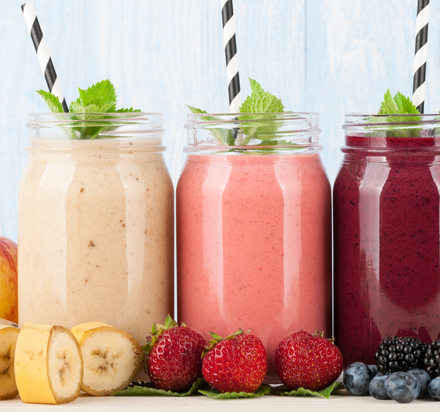
Texturiser systems
Ingredion works to understand the many complexities of your formulation and market challenges — and puts together the right ingredient system that delivers optimal results for your needs in improving mouthfeel with texturiser systems.
Applications
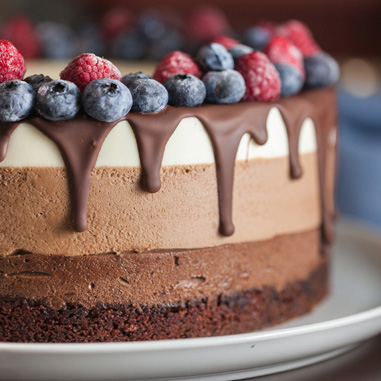
Bakery
Use texturisers to create moist cakes, donuts, brownies and muffins; chewy or crunchy cookies and biscuits; glossy, shiny glazes, icings and frostings; springy gluten-free baked goods; and cohesive egg-free/reduced-egg baked goods.

Batters and breadings
From light and crisp to dense and crunchy, texturants provide just-right texture, adhesion and film-forming capabilities, even in gluten-free and clear coatings.

Beverages
Texturants add body to plant-based beverages and can be used as part of a system in nutritional beverages and reduced-sugar products.

Confectionery
Enhance body in fruit fillings and creamy centres; develop solution-stable films; provide texture in sugar-free/reduced-sugar candies; and use in place of gelatine for vegan or halal gummies.
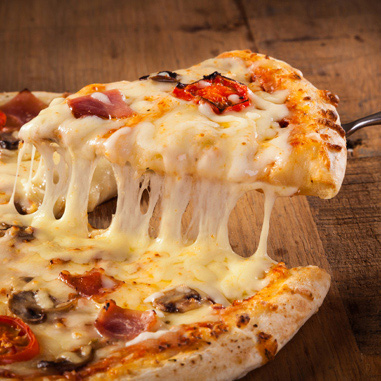
Dairy
Whether adding melt and stretch to cheese, providing texture stability over shelf life in frozen desserts or creating creaminess in yogurt, texturisers excel in both traditional and plant-based dairy.
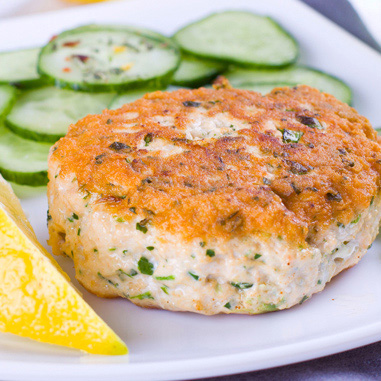
Meat, seafood and poultry
Texturants help reduce purge and increase succulence in unprocessed meats as well as enhance texture in nuggets and patties.

Plant-based foods
Texturisers create creamy mouthfeel in plant-based dairy, body in plant-based beverages, and texture in plant-based meat.

Savoury
Texturants reduce solids, improve freeze-thaw stability and create creamy textures in soups, sauces and gravies, dressings, dips and ready meals.
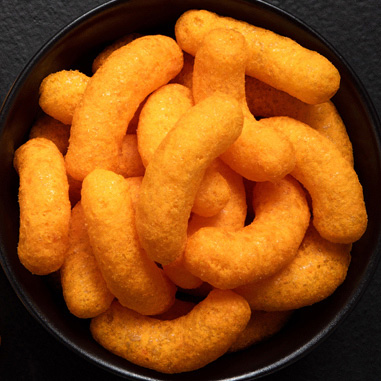
Snacks
From delicate crisps and baked snacks to crunchy crackers, chewy bars and extruded snacks, texturants are incredibly versatile and support a range of eating experiences.
Texturants FAQ
What is texture?
Texture is the feel, appearance or consistency of an object. In food and beverages, texture can be described as the amount of chewiness, crunchiness, creaminess, body and mouthfeel relative to a control. Importantly, texture impacts taste and can accelerate, decelerate or mask the flavour impact in foods and beverages depending on its composition and attributes.
What is mouthfeel?
Mouthfeel is the perception of texture in the mouth. Fatty, waxy, astringent, gritty, grainy and pulpy are all examples of mouthfeel.
What are some common types of food textures?
There is a wide range of food textures, each designed to deliver a desired eating experience. Foods can utilise a combination of textures, including creamy, crunchy, chewy, smooth, rich and pulpy.
How is food texture analysed?
There are numerous ways to analyse texture. Our food scientists are trained on how different ingredients and processes impact texture, and they apply this knowledge as they collaborate with customers. We equip our 32 global Idea Labs™ with various tools, including a specialised piece of equipment we’ve nicknamed “T-REX,” to measure texture, viscosity and rheology to understand how different ingredients impact applications. We utilise spider charts and sensory panels using specially trained participants whose knowledge of specific textural attributes in various applications enable us to choose which ingredients will get to your ideal texture.
What do consumers look for in food textures?
Consumers seek a sensory experience that matches their expectation of the food or beverage (e.g., crunchy chips, creamy smoothie). They also seek textures that are on-trend, exciting and meet their food preferences and needs.
What is the difference between texturisers and texturants?
As it relates to food and beverages, ‘texturisers’ and ‘texturants’ have the same meaning and can be used interchangeably. Usage of one over another may vary by region and locale.
How is starch different from flour?
Starch is characterised as a powder from which the base material (e.g., corn, rice) has been processed to exclude protein. Flour, which has an even better consumer perception,* does not separate the protein from the base material in the finished ingredient.
Do you have texturants that are specifically designed for delicate applications?
We have a broad portfolio of ingredients to suit a range of formulation needs, including low shear and low heat processing. We also have a range of ingredients specifically designed for applications which are light in colour and/or have a neutral flavour.
Let’s make your goals a reality
Agile collaboration. Deep formulation expertise. Broad portfolio of in-demand ingredients. Market research and consumer insights.
*ATLAS, Ingredion Proprietary Consumer Insights, 2021

